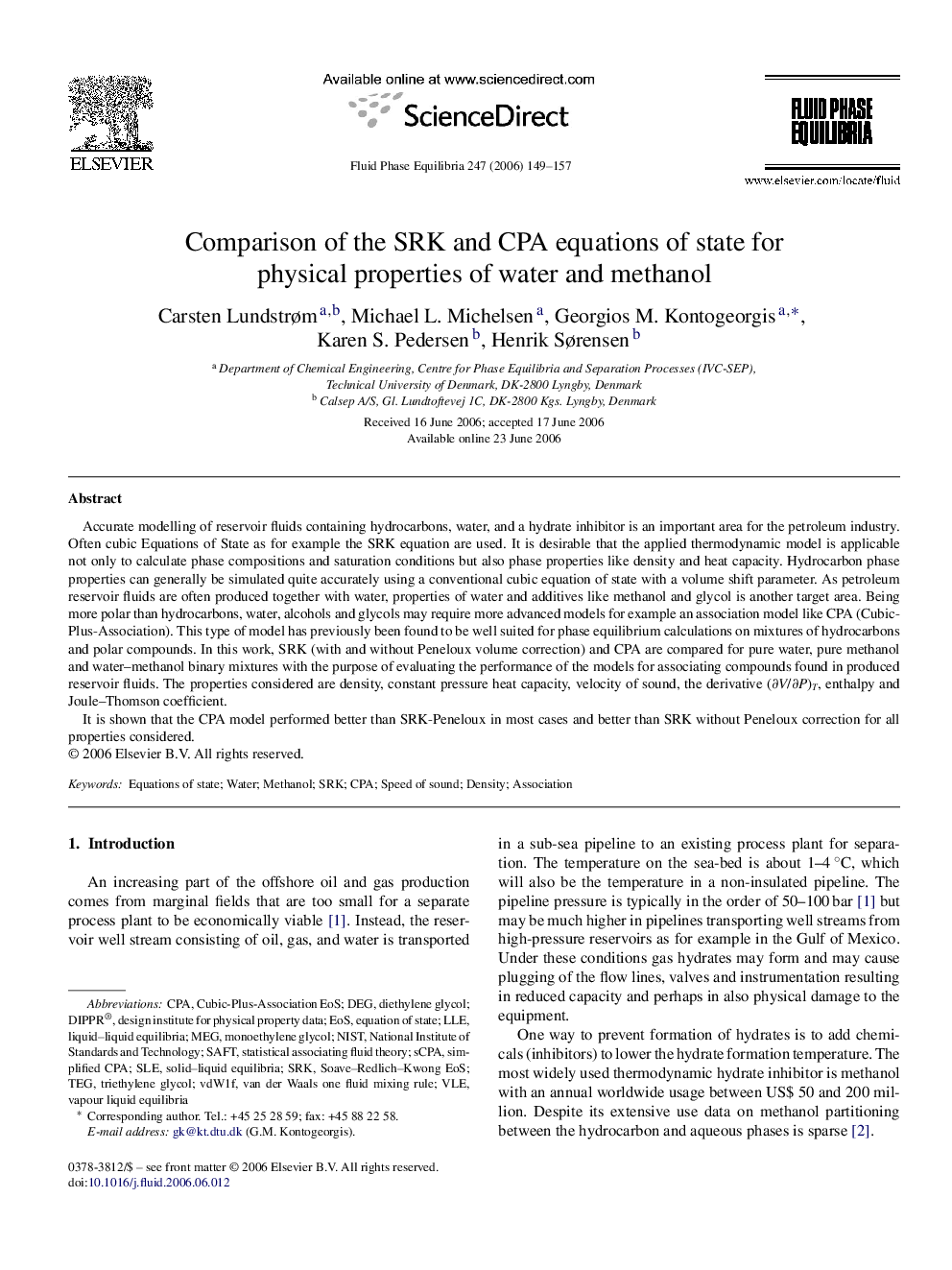| Article ID | Journal | Published Year | Pages | File Type |
|---|---|---|---|---|
| 204120 | Fluid Phase Equilibria | 2006 | 9 Pages |
Accurate modelling of reservoir fluids containing hydrocarbons, water, and a hydrate inhibitor is an important area for the petroleum industry. Often cubic Equations of State as for example the SRK equation are used. It is desirable that the applied thermodynamic model is applicable not only to calculate phase compositions and saturation conditions but also phase properties like density and heat capacity. Hydrocarbon phase properties can generally be simulated quite accurately using a conventional cubic equation of state with a volume shift parameter. As petroleum reservoir fluids are often produced together with water, properties of water and additives like methanol and glycol is another target area. Being more polar than hydrocarbons, water, alcohols and glycols may require more advanced models for example an association model like CPA (Cubic-Plus-Association). This type of model has previously been found to be well suited for phase equilibrium calculations on mixtures of hydrocarbons and polar compounds. In this work, SRK (with and without Peneloux volume correction) and CPA are compared for pure water, pure methanol and water–methanol binary mixtures with the purpose of evaluating the performance of the models for associating compounds found in produced reservoir fluids. The properties considered are density, constant pressure heat capacity, velocity of sound, the derivative (∂V/∂P)T, enthalpy and Joule–Thomson coefficient.It is shown that the CPA model performed better than SRK-Peneloux in most cases and better than SRK without Peneloux correction for all properties considered.
